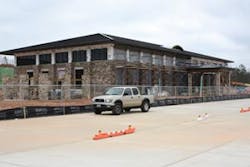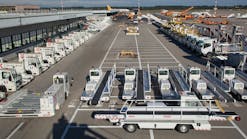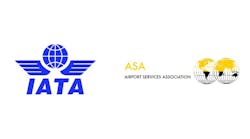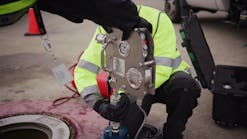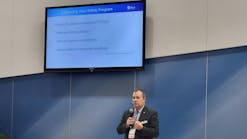DALLAS, GA — Growing up in Paulding County here some 30 miles northwest of Atlanta, Blake Swafford recalls when the region was a quiet rural outpost not yet touched by sprawling urban growth. Over the past decade, however, the county has become the latest hot growth corridor for Atlanta. Recognizing the need for a county airport that could be a central component for future economic development, officials teamed up with the local Industrial Building Authority and state and federal agencies to create the Paulding Northwest Atlanta Airport, which opened in November 2008 and which will have its official public debut on May 1 with the opening of the airport’s general aviation terminal.
Comments Swafford, “When I went to school there was one high school in the county. Now we’ve got five high schools and a sixth is planned for next year. Paulding County has grown from 26,000 in 1987 when I graduated high school to today we’ve got around 140,000. That’s just a result of the growth in metro Atlanta, which has exploded in the last 20 years.”
Swafford was handed the task of overseeing construction of the new airport in 2006, following several years as director of transportation for the county. Prior to that, he had served as an air traffic controller for the U.S. Army and four years working for the LPA Group, a consulting firm which has also been involved in the design of the new Paulding County airport.
The genesis for the county getting into the business of airports actually is tied historically to the City of Atlanta’s long-term aviation planning efforts, according to Swafford.
“We are sitting on the corner of 10,000 acres that was purchased by the City of Atlanta in 1972 for a potential second airport site. In response to the city purchasing those 10,000 acres, Paulding County at that time created an airport authority, with the intent of trying to have some influence over the city’s decision to build a second airport here.
“Basically, nothing ever came of the plan to build the second Atlanta airport. The City of Atlanta still owns the 10,000 acres; they have no interest in building an airport here. I’m not sure they ever really did.”
Swafford explains that in 1996 the Board of Commissioners for Paulding County decided to give serious consideration to the feasibility of building an airport. The Georgia Department of Transportation had already identified Paulding County in a statewide aviation system plan as a potential site for a new airport. “We were at the time the largest county in the state without access to a general aviation airport,” says Swafford.
The Federal Aviation Administration supported the county’s efforts and funded a site selection study in 1996-1997. Following that, the county in 1998 put on the ballot a bond referendum to allow the voters to decide whether or not to bond the approximate $5 million that it would take to purchase the property to build the airport, explains Swafford. The bond referendum failed.
The airport project was tabled and did not surface again until 2002, when a new commission chairman and a new board took up the initiative again. “They knew that I had aviation background and asked me to meet with FAA to see what it would take to revisit the potential of building an airport,” says Swafford. “Essentially, the FAA for the most part said, you need an airport out there, but you’ve gone down this road once before. We need for the county to show that they’ll support the airport moving forward. So, at that time we locally funded an update for the site selection study; we locally funded the design and the environmental work for the project. And our Industrial Building Authority agreed to fund the acquisition of the land.
“In 2003, after producing all of this work to FAA and getting letters of support out of all the local and state elected officials, the FAA agreed to fund the project.
“Between 2003 and 2006, we completed all of our design work; all of our permitting; all of our land acquisition. We broke ground on the project in June 2006.”
To date, FAA has invested some $30 million into the airport; the county some $1.5 million; and the Industrial Building Authority $5 million, according to Swafford.
Putting the project together
Because of the topography of northern Georgia, the county literally had to move mountains to create a level airfield. Comments Swafford, “We basically took a ridge line and for the most part cut the tops of the mountains off and filled them into the valley, and created a runway. We moved over four million cubic yards of dirt; but we have some natural benefits from that — our runway elevation is nearly 1,300 feet, so we are way up high. Which makes our airport very, very visible from the air, and makes our approaches extremely clean.
“The pilots have all given us great feedback on our approaches. They say you can actually see the runway nearly from the Alabama line. We’re about 300 feet higher than Hartsfield.”
One of the key hurdles prior to the opening of the facility, relates Swafford, was getting the right name. Exhibiting at trade shows hosted by the National Business Aviation Association, officials solicited feedback from pilots.
Explains Swafford, “We opened the airport under the name Paulding County Airport and changed it soon after to Paulding Northwest Atlanta Airport, and have seen a much more positive response under the new name. One thing we found is that there’s a Paulding County, Ohio, so a lot of folks who were looking for us were looking in the wrong part of the country.
“The new name helped with geographic recognition; but it also is a more appropriate name for the scale of the airport. This is a 5,500-foot concrete runway with a 9,000-pound weight design; we can accommodate anything up to a 737. The new name is more reflective of the class of the airport.
“A lot of folks are excited that we’re outside the Class B airspace, so you can get in and out without having to get tied up with Atlanta Hartsfield. It seems to be a huge deal for us.”
In a unique arrangement, the county is the official airport sponsor, but the airport property is owned and operated by an airport authority in what Swafford terms a “joint venture”. The Industrial Building Authority, which plans to develop some 110 acres of adjacent property, is another partner, having also provided the match funding for the terminal building.
Regarding the target market for the new airport, Swafford says it’s “the growth of Atlanta. We’re expected to add two million people in Atlanta in the next 15 years.
“We have quite a few companies in this region that deal with aerospace. Lockheed-Martin is only about 15 miles down the road. We have Aerospace Fabricators of Georgia and Top Flight Aerostructures here in the county. We have some great resources in terms of raw materials. We have a company in the county called Rare Metals, which is one of the top suppliers of titanium and other materials that are used in airplane parts fabrication.
“We have Georgia Tech right the road; they’re now the fourth largest aerospace program in the entire country. We’ve got Gulfstream in Georgia; a couple of engine manufacturers in Georgia.”
Private fbo services
The new airport at press time was in the process of negotiating a lease for a private fixed base operator to provide services. Swafford says the county considered getting into the services business itself, but decided a private operator would provide a higher level of service. “Very few cities do it well,” he says. “We’ve had a lot of those conversations over the past two years. We felt like the service would be at a higher standard if it were provided by a private company that is profit-driven, as opposed to a government entity that is subject to fluctuating budgets.”
An initial request for proposals (RFP) for an FBO required the operator to construct a terminal building, which proved an obstacle to generating interest. Explains Swafford, “That would have required a couple of million dollars in investment from the private sector, in an airport that has no track record.
“After going through that, we quickly determined that we needed to fund the FBO terminal building and go back out with a new RFP. We received a grant from the State of Georgia for $3 million to build the terminal building. This RFP process was much more successful than the first.
“The investment we’ve made in the terminal makes it much easier for a private company to come in and start up. They can stick their capital in hangars, which are revenue generators.”
Regarding FBO services, Swafford says the county seeks a full-service operator, but is open to the FBO subbing out various services such as flight training and maintenance. “The two biggest things we are focused on with the FBO are, number one, services; they can’t just come and sell gas. That doesn’t do me any good; I can sell gas on my own. I need them to provide flight training; charter service; aircraft lease; maintenance; a good selection of services. And the second thing is I need them to build some larger hangars. There are plenty of folks willing to build T-hangars; but I need some big box hangars. That’s what their investment will be.”
Regarding overall interest, he says, “We’ve had dozens and dozens of phone calls. The economic environment right now has a lot of people frozen. It’s not that the interest isn’t there; it’s that the economic uncertainty has gotten some people afraid to take that step.”
